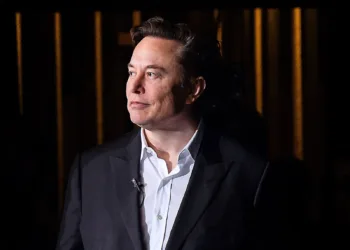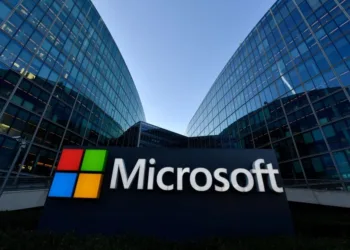China’s BOE has failed spectacularly to meet Apple’s exacting standards for iPhone 17 OLED panels, losing virtually all orders to Samsung Display as quality problems and a devastating patent infringement ruling threaten the company’s entire US market access.
Table of Contents
The Collapse: From 40 Million to 1.4% Market Share
| Metric | Original Plan | Reality | Impact |
|---|---|---|---|
| Expected Orders | 40 million LTPO OLED panels | 7-8 million delivered | 80% shortfall |
| Initial Q3 Contract | 10 million panels | Failed to deliver | Samsung absorbed orders |
| Market Share | ~5% projected | 1.4% actual | 98% collapse |
| Samsung’s New Total | 80 million panels | 90 million panels | +12.5% increase |
| LG Display Share | ~30 million panels | Stable supply | Reliable partner status |
According to South Korea’s ZDNet, China’s BOE has been unable to supply the 10 million LTPO OLED panels that Apple contracted at the beginning of the third quarter. BOE’s initial order for 10 million LTPO OLED panels for the iPhone 17 lineup will now be picked up by Samsung Display, which will ship 90 million panels to Apple.

The LTPO Challenge: BOE’s Technical Failure
BOE has no previous experience with Low-Temperature Polycrystalline Oxide (LTPO) OLED panels. However, through concerted R&D efforts, the company was planning to enter Apple’s sprawling iPhone supply chain this year, with total shipment volumes expected to reach as high as 40 million units.
What Went Wrong: LTPO technology supports variable refresh rates crucial for battery life and smooth 120Hz ProMotion displays. Factory data showed yields around 85%, which trailed results from Samsung’s more mature lines. Apple now uses LTPO panels in every iPhone 17 model, and Samsung and LG treat LTPO as a basic requirement for premium devices, having refined the process over several years.
The Patent Catastrophe: 15-Year US Ban Looming
The ITC issued a preliminary ruling in July finding that BOE and seven subsidiaries misappropriated Samsung Display’s trade secrets for panel manufacturing. If finalized in November, the ruling could ban BOE displays from U.S. imports for an unprecedented 14 years and 8 months.
Unprecedented Severity: South Korean outlets describe this potential penalty as “unprecedentedly severe,” resulting in “an immediate and complete blockade of imports” of all BOE displays. The penalty duration directly ties to the total time Samsung Display spent developing their core OLED technologies.
Financial Impact: Once finalized, companies importing BOE panels will reportedly face 100% bonds—effectively doubling costs and making BOE economically unviable for the US market.
History of Failures: BOE’s Troubled Apple Relationship
2022: Apple previously paused BOE production after unauthorized design changes appeared in a batch of iPhone displays. The issue involved circuitry changes made without Apple’s approval, raising questions about BOE’s internal oversight.
2023: Struggled with light leakage issues around the Dynamic Island cutout for iPhone 15 displays, leading to significantly reduced orders.
2024-2025: BOE managed to only deliver approximately 7-8 million panels to Apple since the start of 2024, falling horribly short of the roughly 40 million units Apple ordered.
Samsung and LG Display Dominate: 99% Market Control
Samsung supplies most of the OLED panels for the iPhone 17 series. Reports indicate that every iPhone 17 model might receive the same Samsung M14 OLED panel, creating a consistent experience across standard and Pro devices.
Winner’s Circle:
- Samsung Display: 90 million panels (~101% increase from original 80 million contract)
- LG Display: ~30 million panels (stable, reliable supply)
- BOE: Maximum 2-3 million panels (China market only, per OLED-Info)

Why Apple Can’t Abandon BOE Completely
Despite catastrophic failures, Apple maintains minimal BOE involvement for strategic reasons:
Supply Chain Diversification: Apple’s original strategy of diversifying suppliers to reduce dependence on any single region or company has hit a significant roadblock with BOE’s struggles.
China Market Requirements: BOE’s limited approval restricts supply to Chinese iPhone sales only, helping Apple navigate local manufacturing preferences and regulatory pressures.
Leverage Against Samsung/LG: Even minimal BOE involvement gives Apple negotiating power to pressure Korean suppliers on pricing and terms.
Geopolitical Complications
Geopolitical scrutiny has added more pressure, with U.S. officials reviewing whether BOE should be treated as a Chinese military-linked company. Legal and patent battles with Samsung Display have increased doubts about BOE’s long-term supply stability.
The convergence of quality failures, patent violations, and potential military-linked designations creates a perfect storm threatening BOE’s entire premium display business.
What This Means for iPhone 17
All Models Get ProMotion: With Samsung and LG reliably supplying LTPO panels, Apple can finally bring 120Hz ProMotion displays to base iPhone 17 and iPhone 17 Air—a feature previously limited to Pro models due to supply constraints.
Consistent Display Quality: Samsung’s M14 OLED panels across all iPhone 17 variants ensure uniform visual experience regardless of model purchased.
Price Stability: Despite losing supplier diversification benefits, Apple’s massive order volumes give sufficient leverage to maintain cost controls with Samsung and LG.
Bottom Line: A Cautionary Tale
BOE’s collapse from 40 million projected orders to barely 1 million delivered units demonstrates that manufacturing capability alone isn’t enough—companies must navigate quality standards, intellectual property respect, and geopolitical considerations to maintain positions in premium supply chains.
For Samsung and LG, BOE’s failures cement their display dominance for years. The 15-year potential import ban ensures Korean manufacturers face minimal Chinese competition in the lucrative US market through 2040.
For Apple, short-term supply chain concentration risks are offset by demonstrated reliability from Samsung and LG, enabling the company to finally democratize ProMotion across the entire iPhone 17 lineup.
For more Apple supply chain analysis and display technology insights, visit TechnoSports.








